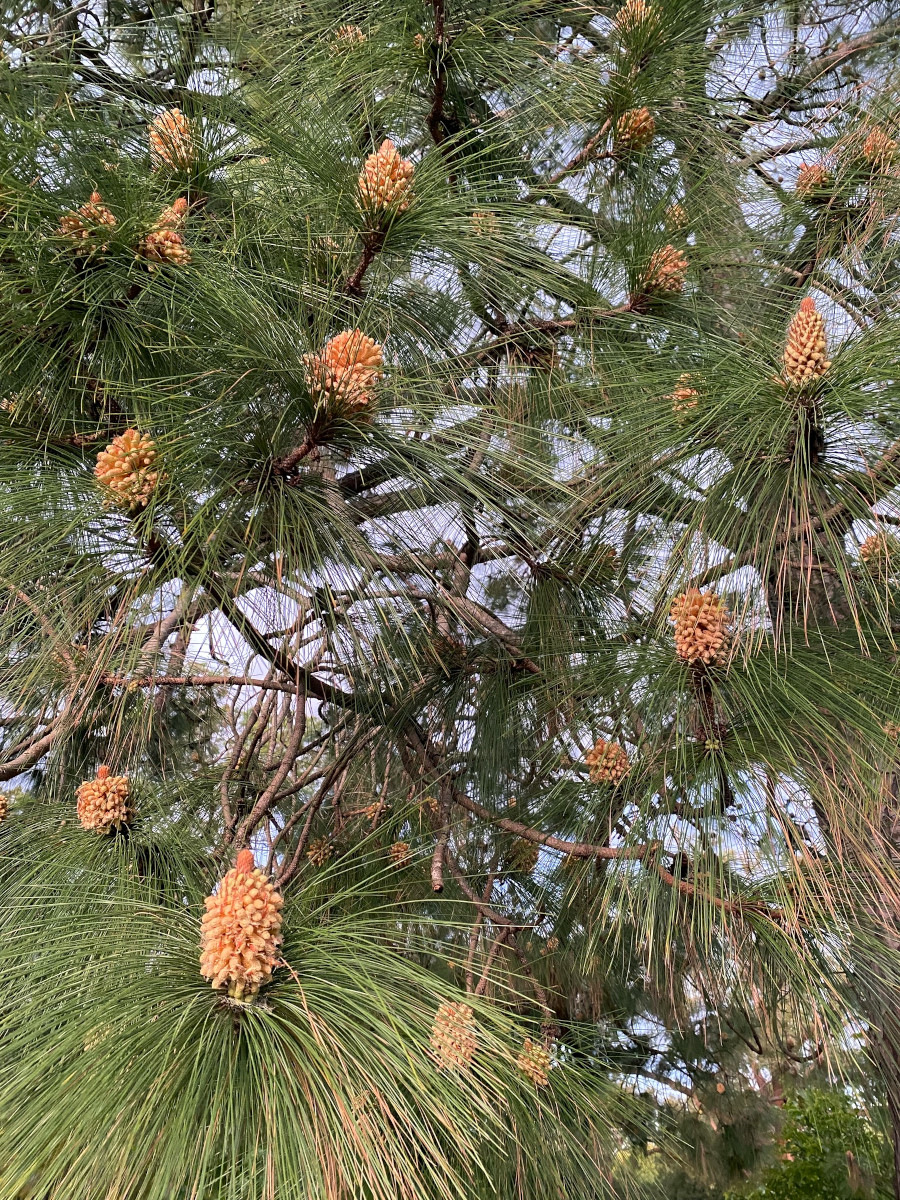Pinus elliottii Engelm. - Pinaceae - slash pine, swamp pine, Elliotts Kiefer
Evergreen tree, up to 30m tall, native to the southeastern North America (southern South Carolina to the Florida Keys); bark orange- to purple-brown, irregularly furrowed and cross-checked; crown conic, becoming rounded or flattened; leaves 2 or 3 per fascicle, persisting ca. 2 years, 15-20)cm long, straight, slightly twisted, yellow- to blue-green, all surfaces with stomatal lines, margins finely serrulate; pollen cones cylindric, 3-4cm, purplish; seed cones maturing in 2 years, falling the year after seed-shed, single or in pairs, 9-18cm long, light chocolate brown, on stalks to 3cm; seeds ellipsoid, 6-7mm, dark brown; wing to 20mm. http://www.efloras.org/florataxon.aspx?flora_id=1&taxon_id=200005333
„Slash pine has two different varieties, var.elliottii and var.densa. Historically, slash pine has been an important economic timber for naval stores, turpentine, and resin.“ wikipedia
The major components of turpentine of P. elliottii var. elliottii were α-pinene (56.6%), camphene (0.6%), β-pinene (35.6%), myrcene (0.3%), dipentene (1.5%), β-phellandrene (3.3%), p-cymene (0.2%), and methyl chavicol (0.7%).
[Chemical composition of P. elliottii var. elliottii turpentine and its possible relation to taxonomy of several pine species., Mirov, N. T., Frank, E., Zavarin, E., Phytochemistry, 4(4), 563-568, 1965]
Major monoterpene constituents of P.elliotti oleoresine were α-pinene (3-95%, mean 30%), β-pinene (0-76%, mean 44%), myrcene (0-60%, mean 7%), limonene (0-81%, mean 7%) and β-phellandrene (0-69%, mean 11%). „Percentages of trees having high amounts of each monoterpene varied greatly among seed origins and revealed distinctive geographic patterns.“
[Geographic variation of monoterpene in cortical oleoresin of slash pine., Gansel, C.R., Squillace, A.E., Silvae Genetica, 25(5/6), 150-154, 1976] PDF
„According to Morton, turpentine has long been used internally for catarrh, chronic bowel inflammation, colds, gonorrhea, leucorrhea, rheumatism, and various urinary complaints… Pine tar has been used for mainy ailments in the past, but letaely it is prescribed only for external use in chronic and parasitic skin diseases…“
[CRC Handbook of Medicinal Herbs, 1983, 376-377]

Engelmann,G., Revision of the genus Pinus, t.1 (1880) [P.Roetter]
http://plantgenera.org/species.php?id_species=794319

Pinus elliotii, Queensland, Australia (2025) © phlphl CC BY-SA 4.0 inaturalist.org



